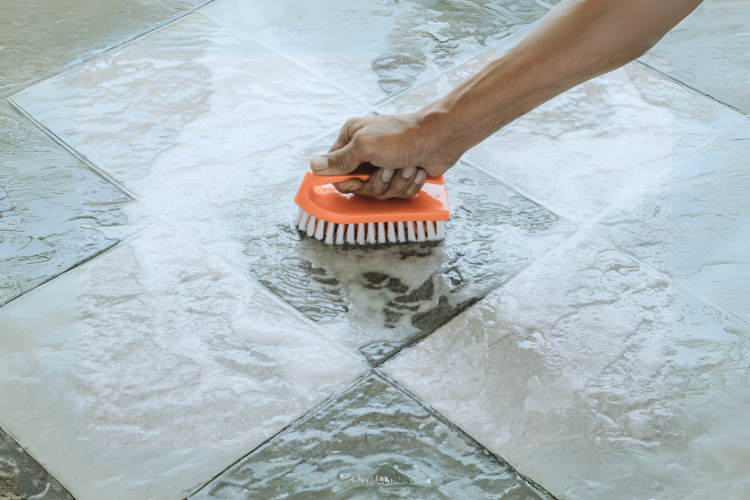Our floors take a beating every day, withstanding dirty shoes, clawed paws, sticky spills, and all manner of dust and grime. Even so, there’s so much to focus on when it comes to cleaning your entire home that you may end up neglecting your floors or cutting corners.
Trust us when we say it adds up. Certain practices can end up damaging your floors and costing you money in the long run.
So, follow along as we identify 5 common practices that may be ruining your floors. We’ll tell you what you can do instead to preserve your floors longer and keep them bright and shiny.
1. Using Too Much Steam/Water
A carpet steamer and a nice mop are lifesavers for keeping your carpets and wood floors looking like new. However, using excessive steam or water can end up doing more harm than good.
If you use too much water on real wood floors, the wood will warp over time. Moisture can also attract wood mites. The moisture can also seep between the floorboards and cause water damage that can weaken the structure of your home.
If you over-steam your carpets or don’t leave steamed carpets with enough ventilation to dry quickly, you’ve sent an open invitation for mildew and other molds as well. Not only does mildew stink, but it can also cause respiratory issues.
If your carpet begins to grow mold, it may be beyond saving. It’s best to reduce the chance as much as possible in the first place.
You can do this by only steaming your carpets on occasion and leaving doors and windows open with a fan on for the carpet to dry completely. This is especially important if you live somewhere with high humidity.
2. Using the Wrong Cleaners
The most important tenant of house cleaning is getting familiar with the materials you’re working with. Each floor will respond to cleaners differently depending on its makeup. If you use the wrong cleaners, you could end up ruining your floors over time, and sometimes instantly.
For example, cleaners with ammonia or vinegar will dissolve a wood floor’s finish over time. Abrasive cleaners will destroy your linoleum. Bleach will stain your carpets and should be reserved only for white. Bleach will also stain vinyl, and ammonia will wear it down.
Make sure you are using products that don’t negatively affect the surface you are cleaning. We recommend Pine-Sol for wood, carpet-specific solutions for your carpet, and white vinegar for linoleum and vinyl.
Make sure you do your research before grabbing the first all-purpose cleaner you see, or you could be costing yourself thousands of dollars.
3. Not Oil Treating Wood or Over-Oiling
Here’s a Goldilocks dilemma for the modern age: How much oil is too much for protecting your wood floors, how much oil is too little, and how much oil is just right?
If you’re just hearing about oiling your wood floors for the first time, listen up. When a wood floor is new, it has been treated with oils to make it resistant to moisture, mold, fungus, and pests. Over time, that oil wears down, leaving your wood unprotected, dull, and more prone to damage.
If you’ve been living in your home for years without oiling your floors, now is the time. On the other hand, if you’re so on top of your housekeeping routine that you oil your floors all the time, you might want to ease up a little.
Over-oiling is just as big a problem as under-oiling. Excess oil can dry to create a sticky surface and damage or warp your wood like excess water over time. So, to answer the Goldilocks question, you should be oiling your wood with tung or linseed oil once every 3-5 years.
4. Not Putting Pads on Furniture Legs
Your floors don’t only have to withstand all the feet and shoes and paws tracking back and forth all day, but also your furniture. Unprotected furniture legs can scratch and scuff the finish on your floors or even dig deep gouges in the wood.
To avoid this kind of damage, you can purchase cheap furniture pads to soften the edges of your furniture. These have the added bonus of making chairs easier to move around without that awful scraping sound. If you don’t want your furniture to be easy to slide around, use rubber pads instead.
If you don’t want to use furniture pads, you can also buy a rug to create a barrier between your furniture and your floor.
5. Not Cleaning Regularly
Life gets busy—we get it. We’re not here to shame anyone for cutting corners when they’ve got more important things to get done. But don’t forget about your floors completely, or you’re going to have to add “replace flooring” to your to-do list as well.
If you let all those small sharp objects, dust, and grime accumulate, it’s all going to get stuck between your floorboards and become harder to clean. It will also wear down the finish with micro-scuffs, leaving your wood dull.
These scuffs in the wood can also allow germs, bacteria, fungus, and mold to seep in if you haven’t disinfected recently or oiled your wood floor in years. As we discussed previously, these can turn into much bigger problems that may demand you replace the wood altogether.
As for carpet, uncleaned dust and crumbs trapped in the fibers can attract pests like dust mites and carpet beetles that are hard to get rid of. They may cause you to have to toss out your carpet entirely. Even unclean wood floors can attract harmful pests like termites, carpenter ants, and wood mites.
Cleaning your floors regularly will help you fend off mold, bacteria, and pests that can ruin your home and cause more serious health problems. We recommend vacuuming/sweeping and mopping your floors once a week.
We hope this article has been helpful in identifying the mistakes you may be making when it comes to cleaning your floors. After introducing better practices into your housekeeping routine, your future self will thank you with all the money they saved and the stress they avoided.
Connect with local floor and carpet cleaners in your area.



